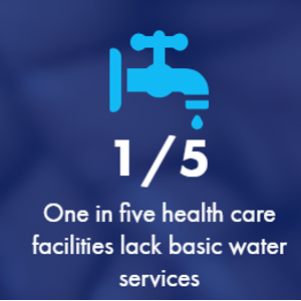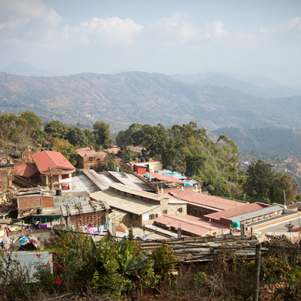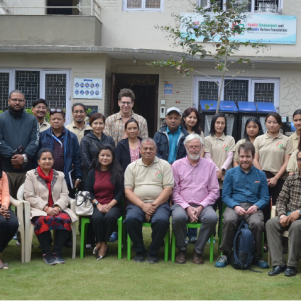The contribution of rainwater harvesting to raise basic water services in health care facilities

Han Heijnen visited Nepal in March 2024 to participate in the Regional Conference on Rainwater Harvesting and Management in Kathmandu and visit some field programme of IRHA’s partners. Upon his return to Kathmandu he was invited to give a webinar on rainwater harvesting in hospitals by HECAF360, a Nepali NGO that since 2006 has been active in capacity building for hospital waste management from the clinical ward level upwards. Nowadays it also advises on raising overall sustainable management following the Global Green and Healthy Hospitals initiative (https://noharm-global.org/issues/global/global-green-and-healthy-hospitals).
It is noteworthy that in most least developed countries (LDCs) rural health centres have only been distributed in the last few decades. Rural hospitals, often initially set up with NGO assistance, served large areas. The facilities tended to be at the edge of the town or village and are only now gradually enveloped by the city. Water supply was by borehole or an extension of the community water supply system. The newer health care facilities are better off, but still there remain serious gaps in the operation of WASH services.
The 2023 WHO/UNICEF Joint Monitoring Programme global report on water, sanitation, hygiene, waste in health care facilities paints a distressing picture. One in five health care facilities (hcf) does not have a basic water service, and 11% does not have water at all. Zooming in on the least developed countries, it shows that only 53% have a functioning water service in their clinic (https://www.washinhcf.org/#/).
It does not always have to be that way. The Tansen Mission Hospital in Western Nepal is a case in point. The hospital has some 170 beds, serves 12.470 inpatients annually and over 100.000 outpatients. As water supply in Tansen was limited, the hospital has always tried to manage their own water affairs. Since 40 years it has collected and stored rainwater for use in the hospital and staff quarters. Until 2016 storage had a total capacity of 1188 m3. The growth of Tansen municipality and the scarcity of water in their system reduced the city supply available and made it more and more difficult to run the hospital during the dry season. An additional water tank of 1500 m3 was completed in 2016. Tansen gets sufficient rainfall to fill this additional tank. The collection and use of rainwater during the monsoon has made all the difference!
In health care facilities water is needed for drinking and hand washing, for various medical interventions, for cleaning during a delivery, for personal hygiene and showering, mopping floors, for flushing toilets, and for watering the surrounding garden. Without water, the risk of hospital acquired infections (HAI) increases substantially as personal hygiene and general cleaning becomes impossible (https://washmatters.wateraid.org/publications/counting-cost-healthcare-acquired-infections-sub-saharan-africa). As hospitals and -to a lesser degree rural health centres- usually have large roof surfaces, collection of rain during rainstorms and the monsoon can provide a lot of clean water.
Depending on the purpose of the water use : for human consumption or for medical practice, the water will need to be treated to be safe according to the national standards, or better. However, most water just has to be clean. Rainwater usually meets that requirement and so the collected rainwater can be used for bathing, toilet flushing or cleaning of floors without treatment. Moreso as the microbial water quality of the rainwater rapidly improves during storage.
The invitation of HECAF360 offered an opportunity to share information on the methods and utility of rainwater harvesting with representatives of 12 hospitals from Kathmandu city and other parts of Nepal. Smart Paani, a consulting firm that has completed several institutional rainwater harvesting systems also attended to be able to answer practical questions. The presentation included an urban explanation from AMSCALL, regulatory aspects taken from a training programme prepared by ARCSA, and showed a practical example from the Ly Nhan hospital in Vietnam implemented by Rain for All from Korea. All three agencies are partners of the IRHA Alliance. HECAF360 will follow-up with the hospitals and encourage them to start the rainwater collection and storage practices in their establishment.


